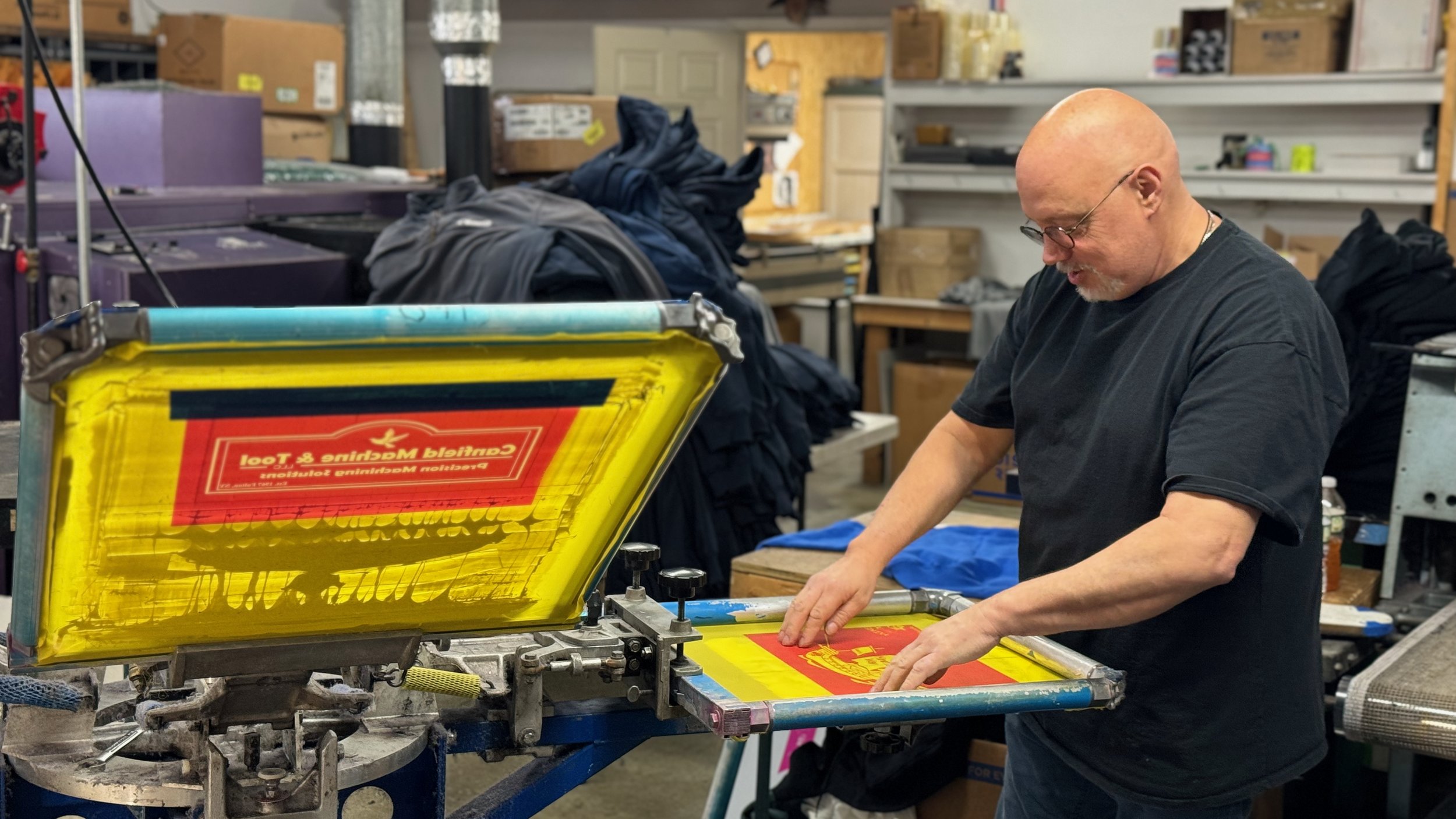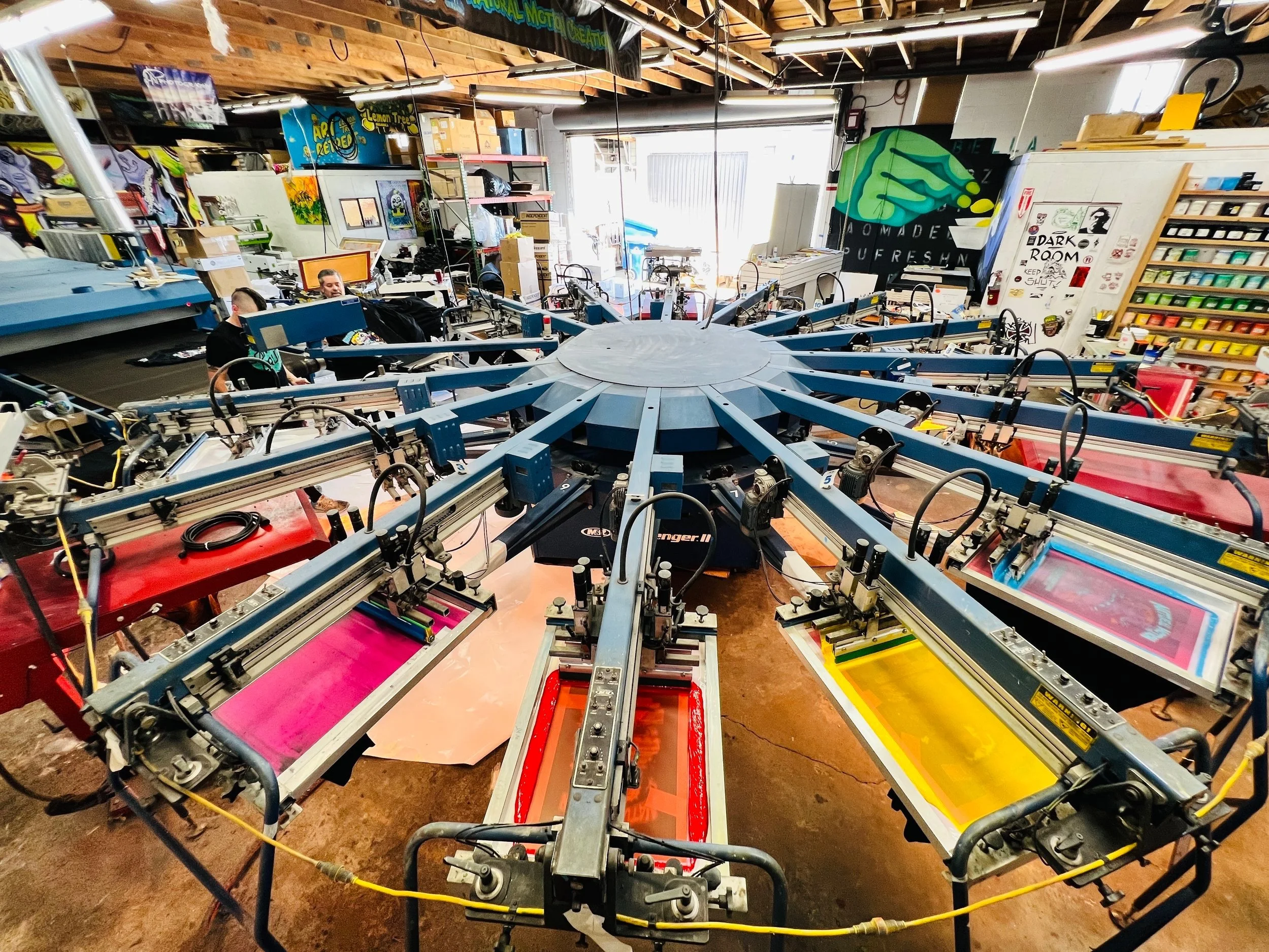Artistic Silk Screen Printing for Limited Edition Prints
Wiki Article
Mastering Silk Screen Printing: Advice for Creating Stunning Styles
If you're wanting to grasp silk screen printing, you'll require even more than just enthusiasm. It requires a strong understanding of techniques, the right tools, and thorough prep work. You'll discover exactly how to prepare your art work and take on typical concerns that can develop throughout the process. By the end, you'll prepare to produce magnificent styles that mirror your one-of-a-kind design. Initially, let's check out the vital basics that lay the foundation for your success.Recognizing the Essentials of Silk Display Printing
Silk screen printing, often called screen printing, is a flexible technique for transferring styles onto numerous products. You'll discover it's suitable for printing on textiles, paper, plastic, and a lot more. The procedure includes producing a stencil, or screen, that enables ink to travel through only in specific areas, generating clean and dynamic styles.To get going, you'll need to prepare your art work, guaranteeing it's in an ideal style. screen printing kit. When you've got your style all set, you'll layer your screen with a light-sensitive solution and expose it to light. This step creates a pattern of your layout on the screen
After rinsing the unexposed emulsion, you're readied to publish. Align your screen over your product, use ink, and utilize a squeegee to push the ink through the display. It's all concerning technique and persistence, so don't hesitate to experiment and fine-tune your method as you go.
Vital Tools and Materials You'll Need
To get going with silk screen printing, you'll need a few basic materials like displays, mops, and ink. Once you fit, you can discover advanced tools that enhances your printing high quality and performance. Let's look at what you'll need to ensure your jobs are effective from the beginning.Basic Silk Display Products
Beginning on a silk screen printing task requires a couple of essential tools and materials to guarantee your success. You'll require a silk display structure, which holds the mesh that transfers your layout. A squeegee is important for pushing ink via the screen onto your substratum. Don't fail to remember the ink itself; pick colors that fit your design and the material you're printing on. A light is crucial for subjecting your screen, along with solution to create your stencil. You'll also require a proper work space, preferably one that's free and well-lit from dirt. Supply up on cleaning supplies to keep your devices and maintain your displays in great problem. With these fundamentals, you're ready to plunge right into your task!Advanced Printing Devices
When you're ready to take your silk screen printing to the next degree, purchasing advanced printing devices can make a considerable distinction. A premium display printing machine is crucial; try to find a multi-color press that enables accurate enrollment and quicker manufacturing. You'll also intend to update to an extra reliable direct exposure device to assure your styles are sharp and vivid.Consider investing in a reputable warmth source, like a conveyor clothes dryer, for also curing of inks. Do not ignore specialized inks; water-based and discharge inks provide superb results on numerous fabrics. An excellent set of squeegees and emulsion scoop coater will certainly simplify your procedure, giving your designs that professional edge.
Preparing Your Artwork for Printing
Preparing your art work for silk display printing is necessary to attaining dynamic, specialist outcomes. Begin by verifying your layout is in the best layout-- vector data like.AI or.EPS work best.When your documents is ready, produce a different layer for each and every color in your design. This'll make it simpler during the printing procedure. Do not fail to remember to add registration marks to line up colors properly.
Additionally, consider the mesh count of your display; finer information might call for a higher mesh count. Ultimately, save your art work with a resolution of at the very least 300 DPI to ensure crisp prints. By complying with these actions, you'll establish yourself up for an effective printing experience and bring your layouts to life magnificently.
The Display Printing Refine: Step-by-Step
Currently that you've prepared your art work, it's time to concentrate on the screen printing procedure itself. You'll start by preparing your screen, guaranteeing it's prepared for the ink application. From there, you'll explore numerous printing techniques to achieve the most effective outcomes for your project.Preparing Your Display
Obtaining your display prepared is a critical action in the silk display printing procedure. As soon as dry, put your openness on the display and make use of a light resource to expose the design. After exposure, clean out the unexposed emulsion, and you'll have your screen prepared for printing.Printing Techniques Described
When your display prepares, you can dive right into the amazing process of printing. Location your display on your substratum-- whether it's textile, paper, or an additional product. Protect it to protect against any movement. Next off, put your ink onto one side of the display and make use of a squeegee to draw the ink throughout the style. Apply also press to ensure the ink penetrates through the mesh. Lift the screen carefully to disclose your print. If you're layering colors, allow each layer completely dry prior to using the following. Clean your screen without delay to avoid ink from drying and blocking the mesh. With method, you'll master the nuances of stress and timing, which will certainly aid you accomplish crisp, dynamic designs.Tips for Getting Vibrant Colors
While achieving dynamic colors in silk display printing might seem challenging, you can quickly elevate your styles with a couple of essential strategies. First, choose top notch inks especially created silk display printing; they provide far better pigmentation and coverage. Mixing inks appropriately can additionally improve vibrancy-- trying out ratios to locate the perfect blend that stands out.
Last but not least, do not forget about treating your prints properly. Correct warmth establishing assurances the colors bond with the material, keeping their vibrancy in time. By applying these strategies, you'll develop sensational, eye-catching layouts that truly shine.
Troubleshooting Common Printing Concerns
Despite having lively colors in your designs, silk screen printing can sometimes offer difficulties. One typical issue is ink blood loss, which frequently takes place when you use way too much ink or don't let the previous layer dry completely. To prevent this, utilize a squeegee with just the right stress and ensure each layer is dry before including more.An additional issue is misalignment. If your layout isn't aligning correctly, confirm your enrollment marks and make modifications to your screens. In addition, if you observe a lack of information, it could be because of a clogged display. Clean your screens extensively before starting your print run.
Last but not least, if the ink isn't adhering well to the textile, consider the material type and the curing procedure. Ensure you're making use of the best ink which you're healing it at the suitable temperature level. Troubleshooting these usual issues will assist you achieve sensational results.
Trying out With Results and techniques
Trying out with various strategies and effects can elevate your silk screen printing projects to brand-new heights. You can likewise play with textures-- making use of different squeegee strategies or incorporating products like brushes or sponges includes dimension to your prints.Consider using specialty inks, such as glow-in-the-dark or metallic, to give your designs an unforeseen spin. You could also check out stenciling, where you can cut complex layouts for magnificent impacts.
Do not forget substrate variants! Printing on textiles, timber, or paper can produce various results that enhance your project's feeling.
Ultimately, maintain a journal of your experiments. Documenting your successes and failures will guide your future creations and aid you improve your design. Accept the process, and take pleasure in the trip of finding what works best for you!
Frequently Asked Concerns
Just how Do I Tidy and Keep My Display Printing Tools?
To cleanse and keep your display printing tools, consistently scrub displays with an appropriate cleaner, clean mops after use, and store whatever in screen printing kit a dry, dust-free atmosphere. Keeping things neat assurances better prints and longer-lasting tools.
Can I Publish on Materials Aside From Fabric?
Take into consideration making use of wood, plastic, or paper. Simply make sure your displays and inks are suitable with those surfaces for the best outcomes.What Is the Best Way to Shop Displays and Inks?
To keep screens and inks effectively, maintain displays upright in an amazing, completely dry area, and cover them to stop dust. Store inks in airtight containers, far from direct sunlight, to maintain their quality and uniformity.Just how Do I Choose the Right Mesh Matter for My Task?
Picking the right mesh matter depends on your layout's detail and ink kind. For fine information, go higher, like 200 mesh (screen printing kit). For strong designs, a lower matter, around 110, functions finest. Experiment to discover your perfect match.What Are the Ecological Influences of Silk Display Printing?
Silk screen printing can have ecological impacts, like chemical waste and water use. You can reduce these by utilizing environment-friendly inks, recycling products, and appropriately throwing away chemicals to minimize your project's ecological impact.Silk screen printing, frequently called display printing, is a functional technique for transferring layouts onto numerous products. Straighten your screen over your product, use ink, and make use of a squeegee to push the ink through the screen.To get started with silk display printing, you'll need a few basic materials like displays, squeegees, and ink.When you're prepared to take your silk display printing to the following level, investing in advanced printing tools can make a substantial distinction.Getting your display ready is an important action in the silk display printing process.
Report this wiki page